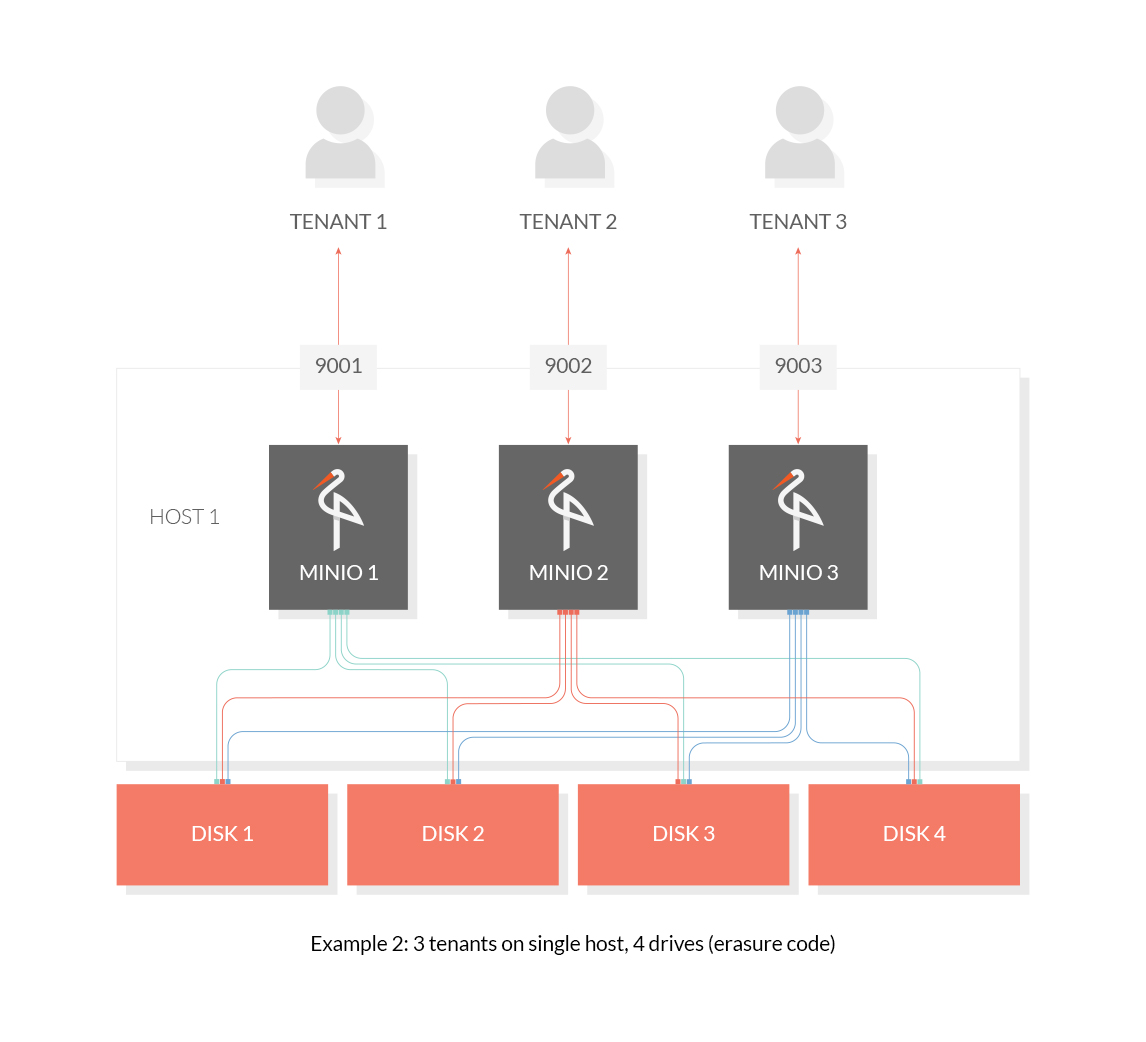- Sort Score
- Result 10 results
- Languages All
Results 1 - 9 of 9 for Reversal (0.62 sec)
-
internal/grid/README.md
and other connections will be blocked while the large payload is being sent. ## Handlers & Routes Handlers have a predefined Handler ID. In addition, there can be several *static* subroutes used to differentiate between different handlers of the same ID. A subroute on a client must match a subroute on the server. So routes cannot be used for dynamic routing, unlike HTTP.
Plain Text - Registered: Sun May 05 19:28:20 GMT 2024 - Last Modified: Thu Jan 18 07:03:17 GMT 2024 - 9.4K bytes - Viewed (0) -
docs/multi-tenancy/README.md
```  ## 2. Distributed Deployment To host multiple tenants in a distributed environment, run several distributed MinIO Server instances concurrently. ### 2.1 Host Multiple Tenants on Multiple Drives (Erasure Code) Use the following commands to host 3 tenants on a 4-node distributed configuration: ```sh
Plain Text - Registered: Sun May 05 19:28:20 GMT 2024 - Last Modified: Thu Sep 29 04:28:45 GMT 2022 - 3K bytes - Viewed (0) -
internal/grid/msg.go
// When a response is received, the mux is already removed from the remote. OpResponse // OpDisconnect instructs that remote wants to disconnect OpDisconnect // OpMerged is several operations merged into one. OpMerged ) const ( // FlagCRCxxh3 indicates that, the lower 32 bits of xxhash3 of the serialized // message will be sent after the serialized message as little endian.
Go - Registered: Sun May 05 19:28:20 GMT 2024 - Last Modified: Tue Nov 28 19:22:29 GMT 2023 - 7.3K bytes - Viewed (0) -
cmd/xl-storage-format-utils_test.go
Go - Registered: Sun May 05 19:28:20 GMT 2024 - Last Modified: Sat Sep 02 14:49:24 GMT 2023 - 6K bytes - Viewed (0) -
cmd/storage-rest-server.go
return 0, h.err } tmp := make([]byte, len(b)) copy(tmp, b) h.block <- tmp return len(b), h.err } // CloseWithError will close the stream and return the specified error. // This can be done several times, but only the first error will be sent. // After calling this the stream should not be written to. func (h *httpStreamResponse) CloseWithError(err error) { if h.done == nil { return } h.done <- err
Go - Registered: Sun May 05 19:28:20 GMT 2024 - Last Modified: Sun Apr 28 17:53:50 GMT 2024 - 44.8K bytes - Viewed (0) -
docs/kms/IAM.md
Now, MinIO encrypts IAM / configuration and S3 objects with a KMS, if present. This change unified the key-management aspect within MinIO. The unified KMS-based approach has several advantages: - Key management is now centralized. There is one way to change or rotate encryption keys. There used to be two different mechanisms - one for regular S3 objects and one for IAM data.
Plain Text - Registered: Sun May 05 19:28:20 GMT 2024 - Last Modified: Thu Jan 18 07:03:17 GMT 2024 - 5.3K bytes - Viewed (0) -
docs/sts/README.md
- Temporary credentials are short-term, as the name implies. They can be configured to last for anywhere from a few minutes to several hours. After the credentials expire, MinIO no longer recognizes them or allows any kind of access from API requests made with them.
Plain Text - Registered: Sun May 05 19:28:20 GMT 2024 - Last Modified: Tue Oct 25 00:44:15 GMT 2022 - 7.8K bytes - Viewed (1) -
internal/config/errors-utils.go
e.hint = fmt.Sprintf(m, args...) return e } // ErrFn function wrapper type ErrFn func(err error) Err // Create a UI error generator, this is needed to simplify // the update of the detailed error message in several places // in MinIO code func newErrFn(msg, action, hint string) ErrFn { return func(err error) Err { u := Err{ msg: msg, action: action, hint: hint, } if err != nil {
Go - Registered: Sun May 05 19:28:20 GMT 2024 - Last Modified: Mon Mar 06 16:56:10 GMT 2023 - 3.7K bytes - Viewed (0) -
docs/distributed/README.md
MinIO in distributed mode lets you pool multiple drives (even on different machines) into a single object storage server. As drives are distributed across several nodes, distributed MinIO can withstand multiple node failures and yet ensure full data protection. ## Why distributed MinIO?
Plain Text - Registered: Sun May 05 19:28:20 GMT 2024 - Last Modified: Thu Jan 18 07:03:17 GMT 2024 - 8.8K bytes - Viewed (0)